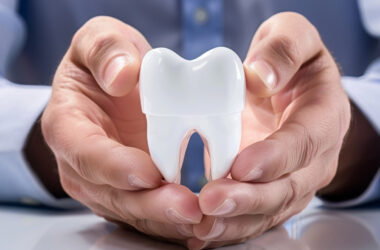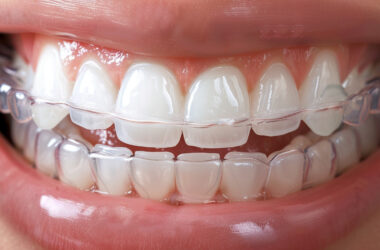If you have one or more missing teeth in your mouth, then a dental bridge is your go-to solution for rectifying it. It is a popular and effective solution to help you get back your oral function and smile.
A dental bridge will preserve the spacing between your teeth by preventing your teeth on either side of the gap from moving closer together as they attempt to close the gap, thus preventing crooked teeth and bite issues. A dental bridge is natural-looking and blends in nicely with the rest of your denture if properly implanted.
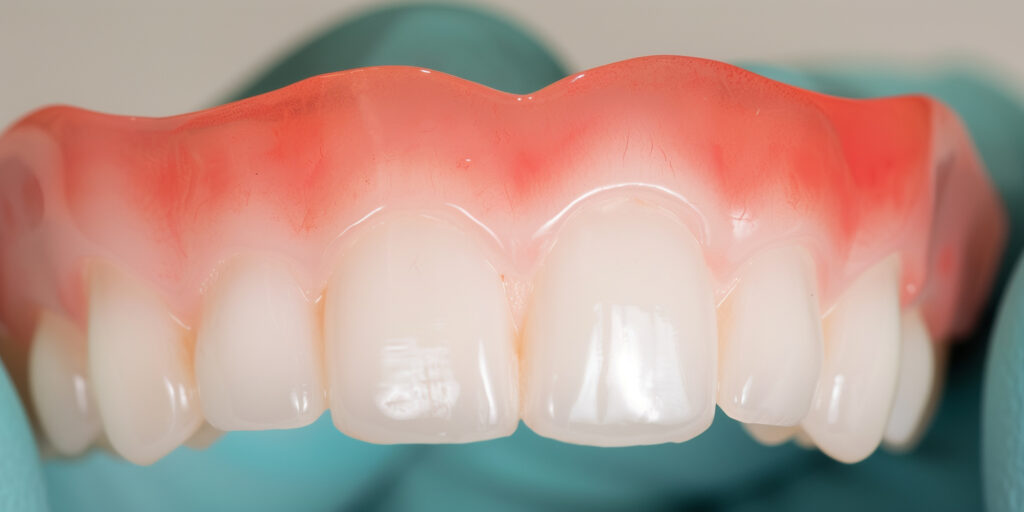
However, a dental bridge is not cheap, which is why most people resort to insurance plans with dental coverage to help them afford the cost of implanting one.
In this article, we break down how much a dental bridge cost with insurance, along with what type of dental bridges there are, and provide you with all of the information you need to make an informed decision.
What is a Dental Bridge?
A dental bridge is a prosthetic that is purpose-built for replacing missing teeth. It is made up of two dental crowns at both ends of the bridge to which the pontics (false teeth) are attached. The bridge is anchored by the crowns to the adjacent teeth bordering the gap left by the missing teeth or to a dental implant with the pontics sitting in the gap and effectively replacing the missing teeth in function and appearance.
A dental bridge can be made of different types of materials like gold, porcelain, ceramics, and zirconia.
A dental bridge that is properly placed will keep your healthy teeth from encroaching into the gap left by your missing teeth. Also, you will be able to chew and speak properly.
Different Types of Dental Bridges
Depending on the specifics of the restoration you are trying to achieve and your budget, your dentist will choose one of the following dental bridges for your procedure:
- Traditional bridge
The traditional bridge is very common. It entails using two dental crowns as anchors in the jawbone for both ends, with the pontics (false teeth) in the middle. Note that all your adjacent teeth in the traditional bridge will be joined together. A traditional bridge can be made of metal, porcelain fused to metal, or ceramic.
- Maryland bridge
The Maryland dental bridge has false teeth flanked by wing-like metals that are used to attach them to the back of the adjacent teeth, bordering the gap left by the missing teeth. The Maryland bridge is a resin-bonded bridge and will be used particularly if you are missing your front teeth.
- Cantilever bridge
The Cantilever bridge is a bridge purpose-built to attach to only one abutment (real tooth) at one end of the gap left by your missing teeth. The Cantilever bridge is the go-to option when the gap you are trying to restore is at an extreme end of your dentiture, usually the back of your mouth or the region where your molars are.
- Implant-supported bridge
The implant-supported bridge, as the name implies, is a bridge that is attached to a dental implant placed on your jaw bone. Usually, your dentist will use an implant-supported bridge for your restoration if you have several missing teeth and do not have enough abutments or anchor teeth or your jaw bone is not dense enough to accept fused pontics.
What is the Cost of a Dental Bridge?
The cost of your dental bridge procedure will depend on a number of factors. Some of them are:
- The number of teeth you are missing
- The location in your denture of the gap left by your missing teeth
- The contiguousness or otherwise of the gap left by your missing teeth
- The type of bridge your dentist is considering for your restoration
- The type of material that will be used for your restoration
- If you are undergoing extra procedures like dental exams, dental cleaning, or gum disease treatment
- The expertise and experience of the dentist handling the procedure
- The location of the practice where you are getting the procedure done
- Your access to dental insurance and the extent of coverage that your plan offers you
On average, you should expect to pay between US$2,000 to US$5,000 for 1 pontic and a single crown for each traditional and cantilever bridge placement, while you can have a Maryland bridge placement for a slightly lower US$1,500 to US$2,500. An implant-supported bridge is pricier and could cost you as much as US$15,000 if your dentist is implanting 2 dental implants spanning 3 or 4 teeth.
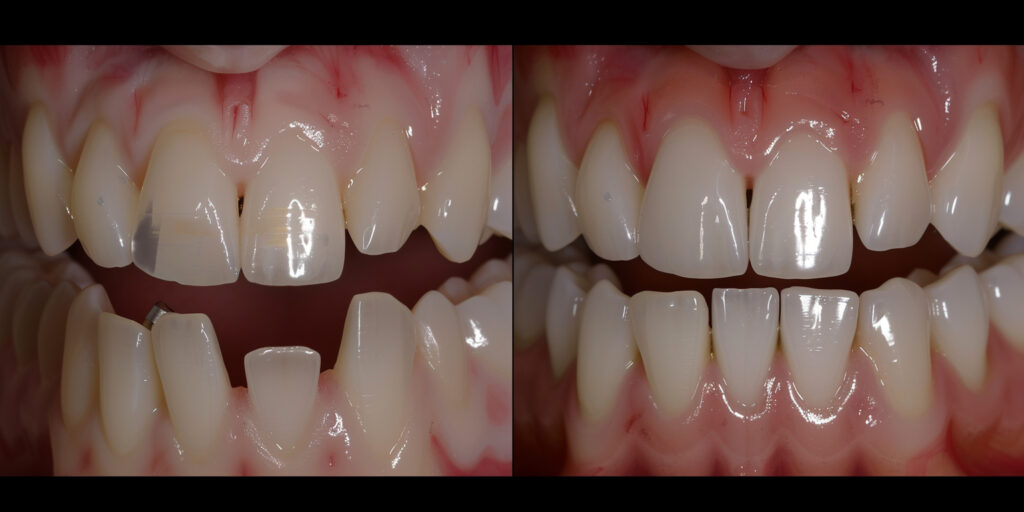
There are additional costs associated with your procedure that you should budget for. They include:
- At least one oral exam, for US$50 to US$200
- At least one dental X-ray, for US$25 to US$50
- Tooth extraction, if you will be having one or a few, for US$50 to US$500 each, depending on how complex the extraction(s) is (are)
- Local anesthesia, for US$100 or thereabouts
- Professional cleaning for as much as US$200
Also read: How Much Does a Dental Bridge Cost Without Insurance?
How Much Does Dental Bridge Cost With Insurance?
As you would have inferred by now, the cost of a dental bridge procedure can be steep. But if you have dental insurance that provides adequate coverage, a portion of those costs can be covered by your policy.
Generally, most dental insurance policies will not cover your dental bridge procedure if it is 100% cosmetic. However, they will provide partial or full (very rare) coverage if the procedure is medically-expedient. Going into specifics, procedures like your oral exam and the X-rays taken of your dentiture will be covered in full because they are considered as preventive medical treatments by most dental insurance policies.
Thus, factoring all mitigating circumstances in, you can expect your dental bridge cost with insurance to be as low as 50% of the total bill for your dental bridge procedure.
You can achieve more cost savings by getting a pre-treatment estimate from your dentist and submitting same to your insurer. Your insurer will let you know what your plan will cover and what you will be paying out of pocket.
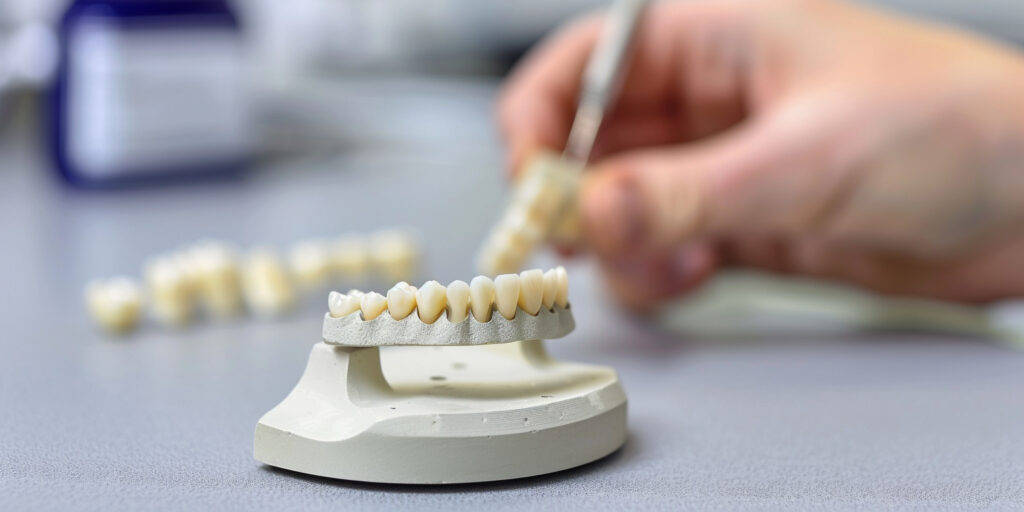
Financing Cost for a Dental Bridge
You will do well to consider some financing options for a portion of the cost of your dental bridge implant procedure. It could make the procedure more affordable for you, especially if your dental bridge cost with insurance is sizeable.
Some of the options you should consider include:
- Payment plans at the dental practice where you are getting your procedure done at
- Medical credit cards like CareCredit
- Personal loans from your bank or family and friends
- Healthcare loans that you can pay in installments
- Having your procedure in a Dental College
Overall, having a dental bridge procedure done is a decision that will set you back by quite some amount of money, even if you are accessing care with an insurance plan.
By carefully considering the specifics of the restoration you are trying to achieve and weighing in financing options that are available to you, it is possible to have your procedure done without it disrupting your finances.
Also read: Cost of Dental Cleaning Without Insurance
We strongly encourage you to schedule a consultation with your dentists to discuss your specific situation and explore all available options. They can guide you through the insurance process, recommend financing solutions, and create a personalized treatment plan to restore your oral health and confidence.








